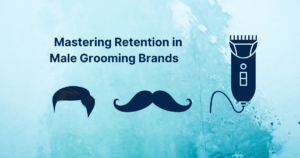Scaling a D2C (Direct-to-Consumer) business involves a lot of hidden costs that are beyond upfront marketing and immediate expenses.
These Hidden Costs of scaling a direct-to-consumer business affect profitability, including various sectors such as logistics, overselling, relying on manual processes instead of automation, which creates a huge impact on the company’s revenue.
Table of Contents
ToggleWhat Is D2C Scaling and Why Should You Care?
Scaling is the context of Direct-to-consumer (D2C) refers to an increase in brands’ revenues and profit margins without leading to a notable surge in costs.
It does not require hiring more staff, expanding infrastructure, or spending more on marketing and advertising like traditional business growth, it focuses on efficiency.
The goal is to serve more consumers, enter new market areas while keeping operational costs relatively flat.
Scaling is about getting more efficient, resilient, and better.
If you are struggling to manage your finances related to D2C, this guide will help you manage your expenses.
Why do we need to scale and manage finances?
1. Sustainable profitability: Rapid growth without efficient scaling leads to high overhead costs and unprofitable operations. Many D2C brands experience fast growth but fail to manage their expenses.
2. Market Adaptability: Scalable operations help you quickly understand the market and adapt to the environment, making it easier to enter new markets.
3. Cost Efficiency: By properly scaling, D2C brands can lower their per-unit costs, optimize supply chains, and invest in additional growth initiatives.
Key Financial Impacts of scaling D2C:
1. Budget mismanagement Risks: Over-investing in marketing without strengthening infrastructure and other necessities can lead to backlogs, cancellations, and reputation damage.
Real-world situations illustrate how mismanagement of budgets can lead to higher cancellation rates and a drop in customer retention.
2. Cash flow strain from inventory and operations: D2C businesses are cash-intensive. Scaling requires continuous investment in upfront inventory, warehouses, and logistics.
They need a larger production to run adequately to tie up stock and cash, which can cause liquidity problems if not kept up with sales.
The lag between receiving revenue from sales and paying suppliers can also create cash flow issues, making it difficult to fund ongoing operations and growth initiatives.
3. High customer Acquisition cost: As the D2C market has become more crowded, the cost of acquiring customers through digital ads and promotions has surged, consuming 30-40% of the marketing budget for Indian brands.
A sharp increase in customer acquisition costs can quickly chip away at your profit margins, unless you’re keeping customers engaged and coming back, or they’re spending enough over their lifetime to make up for it.
Key Challenges in Scaling D2C Brands:
We know scaling a D2C business offers immense growth, but the hidden costs of scaling D2C are loaded with operational and strategic challenges that sometimes can reverse progress.
1. Logistics and Fulfillment Complexities
Efficiently managing inventory across multiple warehouses, fluctuating demand, spikes in volume of orders during seasonal periods, can overwhelm fulfillment operations, leading to delays and customer dissatisfaction.
High consumer expectations and low-cost shipping and returns add further pressure and reverse logistics.
2. Technology and Infrastructure Limitations
Scaling requires a lot of robust technology resources, payment systems require a high investment.
Technical debts, legacy systems, and advanced analytics tools can increase operational costs.
3. Customer Acquisition and Retention Costs
Without retail partners, D2C brands invest more in digital marketing to retain customers, causing high customer acquisition costs.
Rapid scaling leaves behind the organization’s capability to hire onboard skilled talent in operations and technology.
4. Financial and Funding Constraints
D2C brands face challenges in keeping funds for rapid growth. Maintaining a positive cash flow could be difficult due to an increase in the cost of goods sold and logistics during rapid expansion, as all of these eat into profits.
5. Lack of Market Research
Insufficient market research on current trends, consumer preferences, and policies can lead to inconsistent growth, especially in diverse and large markets like India, causing issues such as mismatched product-market fit and compromised product quality.
As D2C brands experience a diverse environment, navigating expansion can be more complex.
How Strategic Research Drives Scalable Growth in D2C?
1. Understanding Consumer Behavior
Market Research services help D2C brands analyze behaviour, preferences, and trends of the consumer, allowing them to tailor their strategies accordingly.
By analyzing data and the interests of the targeted consumer, brands can easily identify customer demographics and purchase patterns.
With structured and customized experiences and targeted marketing, brands can build a strong relationship with their audience that will lead to consumer loyalty and repeat purchases.
2. Identifying Marketing Opportunities
With the help of Market research and market research services, brands can discover unmet consumer needs and wants based on the consumer demand, they can identify these opportunities and cater their services to a wider range.
It can also help you develop innovative products that align with the target consumer and will help you determine the viability of growing into new markets and geographic regions, ensuring that D2C invests in the highest potential growth area.
3. Optimizing Marketing and Sales Strategies
D2C brands can use market research methods to identify which consumer channels to target and will be more effective in driving sales.
It also helps find out the type of content that will resonate with the customers and will drive engagement, providing valuable insights about consumers for the optimization of the user experience and conversion of sales.
4. Efficient Growth Management
In D2C brand sales, growth is not just about speed, it’s about efficiency, clarity, and sustainability.
Strategic research helps in a clear go-to-market plan, understanding consumer pain points, deciding where to invest, identifying the long-term value of consumer segments.
Efficient growth is strategic, not reactive. With the right research, D2C brands can scale confidently, guided by insight, aligned on priorities, and built to last.
What are some things to keep in mind while scaling D2C?
1. Customer-centric Approach
Ensure a consumer-friendly and hassle-free process from browsing to purchasing to the delivery of the product. Tailor your strategies based on consumer journey, individual preferences, and behavior.
Optimize online customer data, marketing, product offerings, overall operations, and prioritize addressing consumer inquiries and concerns effectively.
2. Competitor and Market Analysis
Regularly analyze competitors, market trends, and policies, and stay alert to how you can expand your brand and business through the required information.
Identify new market opportunities quickly and adapt to changes in market shifts and technology according to consumer behavior.
3. Sustainability and Purpose
Embracing sustainability initiatives leads to consumer long-term viability, as consumers don’t just buy products, they buy values.
Consumers are more likely to stay loyal to the brands that align with their values and policies.
Sustainability and purpose are not just good for marketing, they are good business because once the consumer is emotionally connected with a brand, they are more likely to stick with it today and endure tomorrow.
Conclusion
When you are expanding a D2C brand, your financial brand might show revenue climbing, customer count increasing, and ad spend generating solid leads, but here’s a catch: these D2C business metrics do not always tell the full story.
While the financial board highlights top-line growth, they often miss out on the hidden costs of scaling a direct-to-consumer business that swiftly erodes profitability as you scale your brand.
To scale sustainability, you need to look beyond surface metrics and dig deep into backend operations. The sooner you start measuring the right metrics, the faster you will scale.





